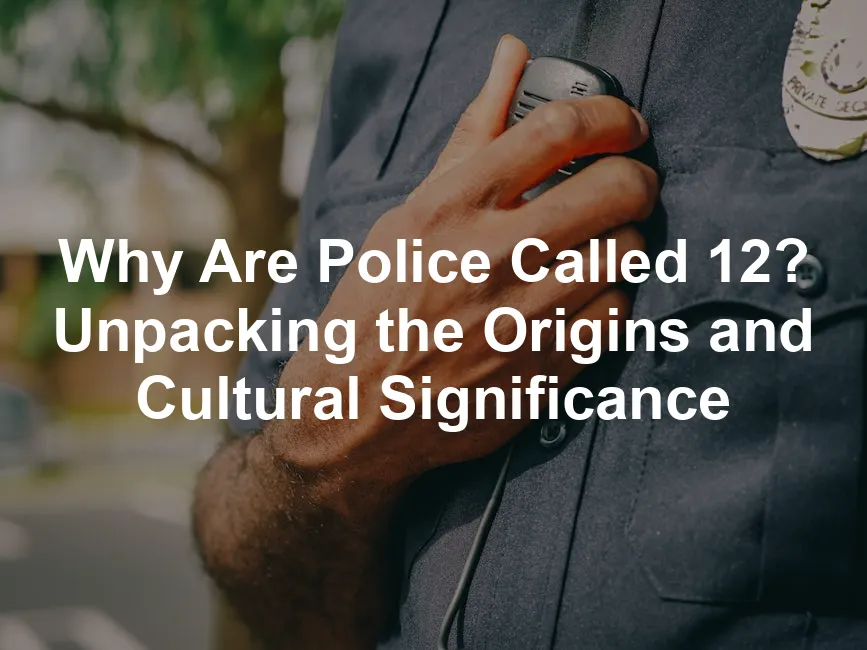
Why Are Police Called 12? Unpacking the Origins and Cultural Significance
Introduction
In an age where slang evolves faster than the speed of light, “12” has surfaced as a popular way to refer to police officers, particularly among younger generations and in certain regions. But why “12”? Is it merely a random number, or does it carry deeper meanings and historical significance?
This catchy term has crept into everyday conversations, social media, and even music. From hip-hop lyrics to viral TikTok videos, it’s everywhere! Yet, the origins of “12” remain a topic of debate. Some attribute it to police radio codes, while others point to the classic TV show Adam-12. A more rebellious twist links it to the acronym ACAB, which stands for All Cops Are Bastards.
The use of “12” is not just a quirky nickname. It reflects cultural dynamics, social tensions, and even a sense of rebellion against authority. As slang often does, it captures the sentiments of a generation grappling with complex relationships with law enforcement.
Speaking of classic television, if you want to dive into the nostalgia of police procedurals, check out Adam-12: The Complete Series (DVD). It’s a great way to see the origins of the term in a fun, entertaining format!
So, why call the police “12”? Let’s unravel the mystery behind this intriguing slang. By examining its origins, cultural implications, and how it has permeated popular culture, we will gain a deeper understanding of this term. Get ready to explore a world where language mirrors societal views and historical contexts. Whether you see it as a lighthearted reference or a serious expression of dissent, “12” undoubtedly tells us much about today’s social landscape.

Theories Behind the Origin of “12”
The Adam-12 TV Show Connection
Ah, the golden age of television! Between 1968 and 1974, Adam-12 graced the airwaves. This police procedural followed two LAPD officers, Pete Malloy and Jim Reed. Their patrol unit was known as 1-Adam-12. The show’s catchy title and memorable style made a lasting impact.
As viewers became enchanted by the duo, it’s possible they started adopting the show’s terminology into their everyday chatter. The number “12” stuck. It became an informal reference, helping to communicate in a playful yet direct way.
Imagine a group of friends hanging out, and someone suddenly yells, “12 is coming!” This was their way of alerting others about the presence of police. Using Adam-12 terminology, they could discuss the police without needing to shout “cops” constantly.
The legacy of Adam-12 lives on, with its influence evident in slang culture. Even today, the show is referenced in various media. Writers, musicians, and creators have drawn inspiration from its iconic characters and storylines. Thus, the term “12” has transcended its origins, becoming a staple in the urban lexicon.
If you’re interested in how police culture has evolved, you might enjoy Police Radio Scanner. It’s a fascinating way to hear real-time police communications!

Police Radio Code Theory
Now, let’s turn up the volume on police radio codes! One popular theory suggests the term “12” comes from the police radio code “10-12.” This code means “visitors present.” Essentially, it served as a heads-up to officers that they might encounter civilians.
Imagine this scenario: a police officer rolls up to a scene and hears, “10-12!” It’s a way of saying, “Hey, there are people around, so keep your guard up!” Over time, this code likely morphed into the shorthand we now know as “12.”
This transformation reflects how language evolves. As the code became ingrained in everyday conversations, people began using “12” more casually. It’s a nifty little warning system, allowing a quick heads-up about law enforcement.
Historically, police codes have played a significant role in shaping community slang. As communities interacted with law enforcement, these codes infiltrated popular culture. They became a part of the urban narrative, helping to define the relationship between police and the public.
Speaking of codes, if you’re interested in understanding more about police communication, consider picking up The Essential Guide to Police Codes. It’s an enlightening read that can give you insight into the language of law enforcement!

ACAB and Other Acronyms
Let’s get a little edgy, shall we? The acronym ACAB, which stands for “All Cops Are Bastards,” has a numerical representation: “1312.” Here, “1” represents “A,” “3” symbolizes “C,” and “2” corresponds to “B.” Some folks have shortened this to simply “12.”
In certain contexts, this interpretation of “12” is viewed as derogatory. It reflects a deeper societal critique of law enforcement and the challenges faced by communities. This negative connotation gained traction during protests and in music, where artists express dissent against police brutality and systemic injustices.
For instance, you might hear “F**k 12” in rap lyrics, as artists highlight their frustrations with law enforcement. It’s a way to channel anger into art, resonating with listeners who feel similarly.
To dive deeper into the cultural impact of such expressions, consider reading Hip Hop Raised Me by DJ Semtex. It explores the intersections of music, culture, and social issues!
So, while “12” can be a lighthearted term, it also carries weighty implications in certain circles. Understanding these nuances is crucial. It sheds light on the ongoing conversations about policing and community dynamics, reminding us of the multifaceted nature of language and its power to reflect societal sentiments.
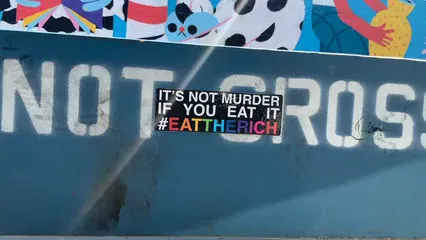
Regional Usage and Cultural Influence
Southern States and Urban Youth Culture
The term “12” has found a cozy home in the Southern states, particularly in cities like Atlanta. This vibrant metropolis isn’t just known for its Southern charm and delicious food; it’s also a hotbed for hip-hop culture. The term “12” has been woven into the fabric of urban youth culture, serving as a shorthand reference to law enforcement.
One of the main reasons “12” gained traction here is the influence of hip-hop. Artists from Atlanta and beyond have popularized this term through catchy lyrics and memorable hooks. For instance, Migos’ track “F*** 12” is a prime example. The song captures the frustrations many feel towards the police, using “12” as a direct reference. Similarly, Gucci Mane and Quavo have also used the term, ensuring that it remains relevant in contemporary conversations.
This cultural influence isn’t just limited to music. It spills over into everyday conversations among youth. When someone shouts, “12’s outside!” it’s more than a casual warning; it’s a code that signifies the arrival of law enforcement, often accompanied by a sense of urgency. This community-driven language creates a shared understanding, blending humor and a hint of rebellion into the mix.
In cities like Atlanta, “12” embodies more than just a term for police; it reflects a broader narrative about authority, youth identity, and cultural expression. It’s a clever way for communities to communicate about police presence without using the more formal “police.” The term has become a cultural touchstone, highlighting the unique relationship urban youth have with law enforcement.
For those interested in exploring the cultural significance of police representation, I recommend The Rap Year Book by Shea Serrano. It dives into the evolution of rap and its reflections on society!

Pop Culture References
“12” has transcended its origins, making appearances in movies, television shows, and social media, further shaping public perceptions of law enforcement. From gritty dramas to light-hearted comedies, this slang has embedded itself within pop culture, influencing how communities view police.
For example, the term gets a shout-out in the 1995 comedy film “Friday.” Ice Cube’s character uses “12” to alert his friends about the police’s approach. This comedic portrayal softens the seriousness of police encounters, allowing audiences to laugh while recognizing the underlying tension. Such references provide a lens through which viewers can examine their own relationships with law enforcement.
Moreover, reality television has also embraced the term. Shows that document police work often feature urban slang like “12,” reinforcing its acceptance in mainstream culture. This portrayal can lead to mixed perceptions: some may see it as a humorous nod, while others might perceive it as a reinforcement of negative stereotypes about police interactions.
However, the impact of these representations is significant. They can shape community attitudes toward police, either fostering mistrust or encouraging dialogue. When viewers see “12” in various contexts, it can evoke a range of emotions from resentment to camaraderie, depending on personal experiences with law enforcement.
In summary, “12” is not just a slang term; it’s a cultural phenomenon. Its presence in pop culture highlights the ongoing conversation about policing and community dynamics, illustrating how slang evolves and reflects societal attitudes. Whether in music, film, or daily chatter, “12” serves as a reminder of the complex relationship between communities and law enforcement.
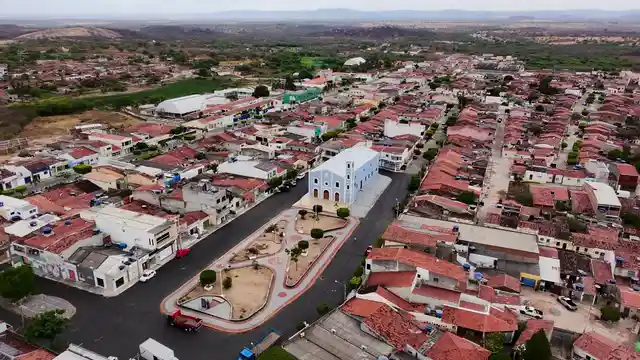
Linguistic Insights
The Role of Slang in Communication
Slang evolves for many reasons. Primarily, it creates a unique community identity. Just think about it: using specific terms helps groups bond. When you hear “12,” it instantly connects you to a larger narrative. This term doesn’t just mean police; it signifies a shared understanding among those who use it.
“12” serves as a quick, efficient means of communication. You can alert friends about police presence without explicitly saying “police.” It’s like a secret handshake, but with words. This clever shorthand reflects the creativity and adaptability of language in urban communities.
Slang offers a way to express feelings about law enforcement too. When someone says, “12 is here,” it often carries a tone of urgency or caution. This brevity is essential in fast-paced environments where details matter. The term encapsulates complex emotions in just two syllables.

The Significance of Numbers in Language
Numbers have long played a significant role in language. They often carry meanings that go beyond their numerical value. For example, “12” is not just a number; it’s a cultural touchstone. It’s a linguistic phenomenon where numbers serve as shorthand for broader concepts, especially in slang.
Many other numerical slang terms exist as well. Take “5-0,” which refers to police, originating from the TV show Hawaii 5-O. Similarly, “911” often signifies emergencies. These numerical references are easy to remember and convey information swiftly.
In urban settings, numbers foster a sense of belonging. They allow individuals to communicate within their community while excluding outsiders. This creates a unique linguistic landscape, where every number has a story. So, “12” isn’t just an abbreviation; it represents a shared history and experience among its users.

Controversies and Criticisms
Perceptions of Disrespect
Some argue that calling police “12” is inherently disrespectful. This term can be perceived as derogatory, especially among those who have negative experiences with law enforcement. Critics contend that using slang terms diminishes the authority of police.
Referring to police as “12” can also imply a sense of rebellion. It suggests a divide between communities and those enforcing the law. When people use “12,” it often reflects frustration or distrust. This perception highlights the complexities of language in discussing authority figures.
Additionally, using slang in serious conversations about law enforcement can trivialize important issues. Critics worry that “12” could undermine efforts to promote constructive dialogue. In this sense, the term carries weighty implications and can be seen as a challenge to authority.
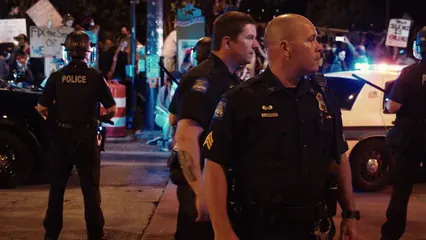
Defense of Slang Usage
On the flip side, many defend slang as a vital form of cultural expression. Language is ever-evolving, and slang is a natural part of that evolution. Proponents argue it reflects the identity and experiences of specific communities.
Slang can also serve as a unifying force. While “12” may carry negative connotations for some, it can also foster solidarity among those who use it. It’s a way for communities to express dissent while maintaining a unique identity.
Language plays a significant role in social and political movements. Slang often becomes a rallying cry for change. Terms like “12” showcase how language can evolve in response to societal challenges. This ongoing conversation highlights the dynamic nature of communication and its power to shape perceptions.
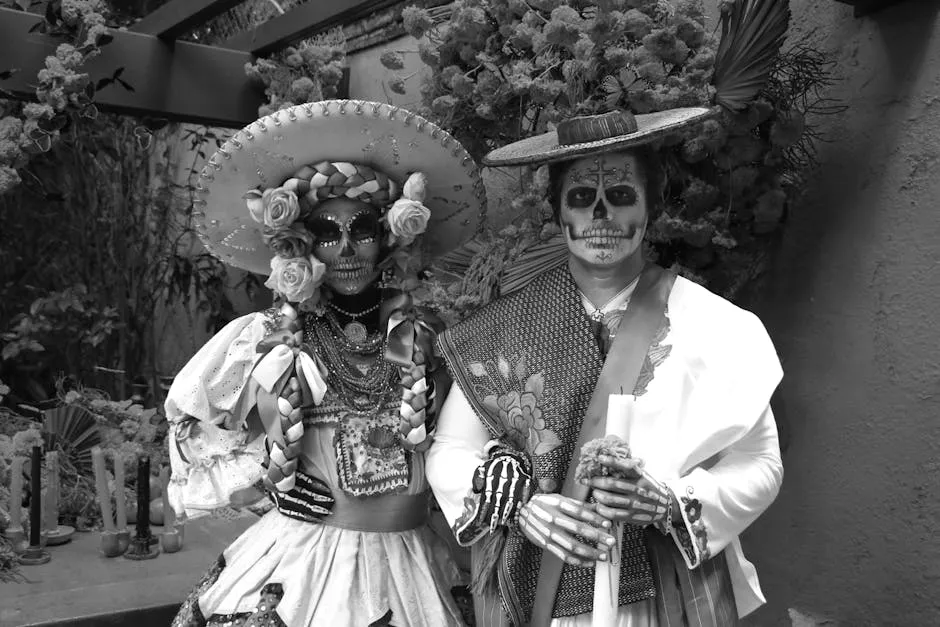
Conclusion
Understanding why police are referred to as “12” involves exploring a complex web of historical, cultural, and linguistic threads. This term has become a staple in urban vernacular, especially among younger generations. While the term might seem innocuous on the surface, its implications run deep, reflecting societal attitudes toward law enforcement and community relations.
“12” can signal a mix of respect, disdain, or ambivalence toward police, depending on the context. In some circles, it’s a playful nod to a familiar presence, while in others, it serves as a warning of authority looming nearby. By examining the roots of “12,” we can see how it encapsulates the evolving dynamics between communities and law enforcement.
As we navigate the evolving landscape of language and its impact on social dynamics, recognizing the power of terms like “12” can foster more meaningful conversations about policing and community engagement. This term invites us to reflect on our relationship with authority figures and encourages dialogue about the role of police in society. In doing so, we can work toward a more nuanced understanding of both language and the societal structures it represents. Ultimately, “12” is more than just a slang term; it’s a lens through which we can view the complexities of modern law enforcement and community interactions.

FAQs
Is “12” a derogatory term for police?
The context and intent behind its usage can heavily influence perceptions. While some people use “12” in a lighthearted manner, others might wield it as an insult. It’s essential to consider the tone and situation when interpreting its meaning.
Do all police officers use the term “12”?
Not at all! “12” is primarily a slang term used by the community. Law enforcement officers themselves typically don’t refer to each other with this term. It’s more of a cultural reference among civilians.
Are there other slang terms for police?
Absolutely! There’s a colorful array of slang for police, including “cops,” “5-0,” and “the fuzz.” Each term carries its own connotations and cultural significance.
What role does pop culture play in slang evolution?
Pop culture is a significant driver of slang evolution. Music, films, and social media contribute to the proliferation of terms like “12.” They help shape public perception and provide a platform for new phrases to gain traction.
Understanding how cultural influences shape perceptions can be crucial. why do cultural influences impact fear of public speaking in 2024
Please let us know what you think about our content by leaving a comment down below!
Thank you for reading till here 🙂
All images from Pexels




